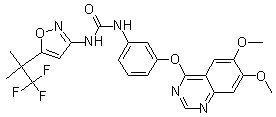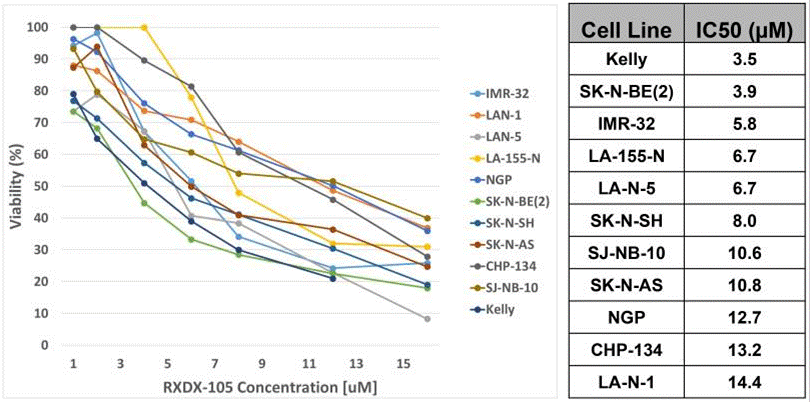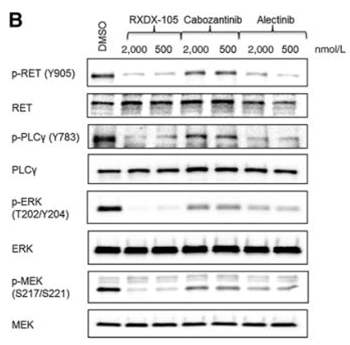
- Inhibitors
- By product type
- Natural Products
- Inducing Agents
- Peptides
- Antibiotics
- Antibody-drug Conjugates(ADC)
- PROTAC
- Hydrotropic Agents
- Dyes
- By Signaling Pathways
- PI3K/Akt/mTOR
- Epigenetics
- Methylation
- Immunology & Inflammation
- Protein Tyrosine Kinase
- Angiogenesis
- Apoptosis
- Autophagy
By research - Antibodies
- Compound Libraries
- Popular Compound Libraries
- Customize Library
- Clinical and FDA-approved Related
- Bioactive Compound Libraries
- Inhibitor Related
- Natural Product Related
- Metabolism Related
- Cell Death Related
- By Signaling Pathway
- By Disease
- Anti-infection and Antiviral Related
- Neuronal and Immunology Related
- Fragment and Covalent Related
- FDA-approved Drug Library
- FDA-approved & Passed Phase I Drug Library
- Preclinical/Clinical Compound Library
- Bioactive Compound Library-I
- Bioactive Compound Library-Ⅱ
- Kinase Inhibitor Library
- Express-Pick Library
- Natural Product Library
- Human Endogenous Metabolite Compound Library
- Alkaloid Compound LibraryNew
- Angiogenesis Related compound Library
- Anti-Aging Compound Library
- Anti-alzheimer Disease Compound Library
- Antibiotics compound Library
- Anti-cancer Compound Library
- Anti-cancer Compound Library-Ⅱ
- Anti-cancer Metabolism Compound Library
- Anti-Cardiovascular Disease Compound Library
- Anti-diabetic Compound Library
- Anti-infection Compound Library
- Antioxidant Compound Library
- Anti-parasitic Compound Library
- Antiviral Compound Library
- Apoptosis Compound Library
- Autophagy Compound Library
- Calcium Channel Blocker LibraryNew
- Cambridge Cancer Compound Library
- Carbohydrate Metabolism Compound LibraryNew
- Cell Cycle compound library
- CNS-Penetrant Compound Library
- Covalent Inhibitor Library
- Cytokine Inhibitor LibraryNew
- Cytoskeletal Signaling Pathway Compound Library
- DNA Damage/DNA Repair compound Library
- Drug-like Compound Library
- Endoplasmic Reticulum Stress Compound Library
- Epigenetics Compound Library
- Exosome Secretion Related Compound LibraryNew
- FDA-approved Anticancer Drug LibraryNew
- Ferroptosis Compound Library
- Flavonoid Compound Library
- Fragment Library
- Glutamine Metabolism Compound Library
- Glycolysis Compound Library
- GPCR Compound Library
- Gut Microbial Metabolite Library
- HIF-1 Signaling Pathway Compound Library
- Highly Selective Inhibitor Library
- Histone modification compound library
- HTS Library for Drug Discovery
- Human Hormone Related Compound LibraryNew
- Human Transcription Factor Compound LibraryNew
- Immunology/Inflammation Compound Library
- Inhibitor Library
- Ion Channel Ligand Library
- JAK/STAT compound library
- Lipid Metabolism Compound LibraryNew
- Macrocyclic Compound Library
- MAPK Inhibitor Library
- Medicine Food Homology Compound Library
- Metabolism Compound Library
- Methylation Compound Library
- Mouse Metabolite Compound LibraryNew
- Natural Organic Compound Library
- Neuronal Signaling Compound Library
- NF-κB Signaling Compound Library
- Nucleoside Analogue Library
- Obesity Compound Library
- Oxidative Stress Compound LibraryNew
- Plant Extract Library
- Phenotypic Screening Library
- PI3K/Akt Inhibitor Library
- Protease Inhibitor Library
- Protein-protein Interaction Inhibitor Library
- Pyroptosis Compound Library
- Small Molecule Immuno-Oncology Compound Library
- Mitochondria-Targeted Compound LibraryNew
- Stem Cell Differentiation Compound LibraryNew
- Stem Cell Signaling Compound Library
- Natural Phenol Compound LibraryNew
- Natural Terpenoid Compound LibraryNew
- TGF-beta/Smad compound library
- Traditional Chinese Medicine Library
- Tyrosine Kinase Inhibitor Library
- Ubiquitination Compound Library
-
Cherry Picking
You can personalize your library with chemicals from within Selleck's inventory. Build the right library for your research endeavors by choosing from compounds in all of our available libraries.
Please contact us at info@selleckchem.com to customize your library.
You could select:
- Bioreagents
- qPCR
- 2x SYBR Green qPCR Master Mix
- 2x SYBR Green qPCR Master Mix(Low ROX)
- 2x SYBR Green qPCR Master Mix(High ROX)
- Protein Assay
- Protein A/G Magnetic Beads for IP
- Anti-Flag magnetic beads
- Anti-Flag Affinity Gel
- Anti-Myc magnetic beads
- Anti-HA magnetic beads
- Poly DYKDDDDK Tag Peptide lyophilized powder
- Protease Inhibitor Cocktail
- Protease Inhibitor Cocktail (EDTA-Free, 100X in DMSO)
- Phosphatase Inhibitor Cocktail (2 Tubes, 100X)
- Cell Biology
- Cell Counting Kit-8 (CCK-8)
- Animal Experiment
- Mouse Direct PCR Kit (For Genotyping)
- Featured Products
- MRTX1133
- Nab-Paclitaxel
- KP-457
- IAG933
- RMC-6236 (Daraxonrasib)
- RMC-7977
- Zoldonrasib (RMC-9805)
- GsMTx4
- Navitoclax (ABT-263)
- TSA (Trichostatin A)
- Y-27632 Dihydrochloride
- SB431542
- SB202190
- MK-2206 Dihydrochloride
- LY294002
- Alisertib (MLN8237)
- XAV-939
- CHIR-99021 (Laduviglusib)
- Bafilomycin A1 (Baf-A1)
- Thiazovivin (TZV)
- CP-673451
- Verteporfin
- DAPT
- Galunisertib (LY2157299)
- MG132
- SBE-β-CD
- Tween 80
- Bavdegalutamide (ARV-110)
- Z-VAD-FMK
- Wnt-C59 (C59)
- IWR-1-endo
- (+)-JQ1
- 3-Deazaneplanocin A (DZNep) Hydrochloride
- RepSox (E-616452)
- Erastin
- Q-VD-Oph
- Puromycin Dihydrochloride
- Cycloheximide
- Telaglenastat (CB-839)
- A-83-01
- Ceralasertib (AZD6738)
- Liproxstatin-1
- Emricasan (IDN-6556)
- PMA (Phorbol 12-myristate 13-acetate)
- Dibutyryl cAMP (Bucladesine) sodium
- Nedisertib (M3814)
- PLX5622
- IKE (Imidazole Ketone Erastin)
- STM2457
- Saruparib (AZD5305)
- New Products
- Contact Us
research use only
Agerafenib (CEP-32496) Raf inhibitor
Cat.No.S8015

Chemical Structure
Molecular Weight: 517.46
Quality Control
Cell Culture, Treatment & Working Concentration
| Cell Lines | Assay Type | Concentration | Incubation Time | Formulation | Activity Description | PMID |
|---|---|---|---|---|---|---|
| HEK293 | Function assay | 1 hr | Inhibition of LCK in human HEK293 cells after 1 hr by competition binding assay, Kd=0.002μM. | 22168626 | ||
| HEK293 | Function assay | 1 hr | Inhibition of PDGFRbeta in human HEK293 cells after 1 hr by competition binding assay, Kd=0.002μM. | 22168626 | ||
| HEK293 | Function assay | 1 hr | Inhibition of cKit in human HEK293 cells after 1 hr by competition binding assay, Kd=0.002μM. | 22168626 | ||
| HEK293 | Function assay | 1 hr | Inhibition of Ret in human HEK293 cells after 1 hr by competition binding assay, Kd=0.002μM. | 22168626 | ||
| HEK293 | Function assay | 1 hr | Inhibition of Abl1 in human HEK293 cells after 1 hr by competition binding assay, Kd=0.003μM. | 22168626 | ||
| HEK293 | Function assay | 1 hr | Inhibition of VEGFR2 in human HEK293 cells after 1 hr by competition binding assay, Kd=0.008μM. | 22168626 | ||
| HEK293 | Function assay | 1 hr | Inhibition of CSF1R in human HEK293 cells after 1 hr by competition binding assay, Kd=0.009μM. | 22168626 | ||
| HEK293 | Function assay | 1 hr | Inhibition of EPHA2 in human HEK293 cells after 1 hr by competition binding assay, Kd=0.014μM. | 22168626 | ||
| HEK293 | Function assay | 1 hr | Inhibition of BRAF V600E mutant in human HEK293 cells after 1 hr by competition binding assay, Kd=0.014μM. | 22168626 | ||
| HEK293 | Function assay | 1 hr | Inhibition of EGFR in human HEK293 cells after 1 hr by competition binding assay, Kd=0.022μM. | 22168626 | ||
| HEK293 | Function assay | 1 hr | Inhibition of wild type BRAF in human HEK293 cells after 1 hr by competition binding assay, Kd=0.036μM. | 22168626 | ||
| COLO205 | Cytotoxicity assay | 72 hrs | Cytotoxicity against human COLO205 cells expressing BRAF V600E mutant after 72 hrs by cell titer blue assay, EC50=0.036μM. | 22168626 | ||
| HEK293 | Function assay | 1 hr | Inhibition of CRAF in human HEK293 cells after 1 hr by competition binding assay, Kd=0.039μM. | 22168626 | ||
| A375 | Cytotoxicity assay | 72 hrs | Cytotoxicity against human A375 cells expressing BRAF V600E mutant after 72 hrs by cell titer blue assay, IC50=0.078μM. | 22168626 | ||
| A375 | Function assay | 2 hrs | Inhibition of BRAF V600E mutant-mediated MEK phosphorylation in human A375 cells after 2 hrs, IC50=0.082μM. | 22168626 | ||
| HCC827 | Function assay | Displacement of [3H]-cyclopamine from SMO V404M mutant in gefitinib resistant human HCC827 cells by scintillation counting, Ki=0.1878μM. | 28787156 | |||
| COLO679 | Cytotoxicity assay | 72 hrs | Cytotoxicity against human COLO679 cells expressing BRAF V600E mutant after 72 hrs by cell titer blue assay, EC50=0.211μM. | 22168626 | ||
| HT144 | Cytotoxicity assay | 72 hrs | Cytotoxicity against human HT144 cells expressing BRAF V600E mutant after 72 hrs by cell titer blue assay, EC50=0.228μM. | 22168626 | ||
| SK-MEL-28 | Cytotoxicity assay | 72 hrs | Cytotoxicity against human SK-MEL-28 cells expressing BRAF V600E mutant after 72 hrs by cell titer blue assay, EC50=0.454μM. | 22168626 | ||
| HEK293 | Function assay | 1 hr | Inhibition of cMET in human HEK293 cells after 1 hr by competition binding assay, Kd=0.513μM. | 22168626 | ||
| HCT116 | Cytotoxicity assay | 72 hrs | Cytotoxicity against human HCT116 cells expressing wild type BRAF after 72 hrs by cell titer blue assay, EC50=0.669μM. | 22168626 | ||
| Hs578T | Cytotoxicity assay | 72 hrs | Cytotoxicity against human Hs578T cells expressing wild type BRAF after 72 hrs by cell titer blue assay, EC50=2.736μM. | 22168626 | ||
| DU145 | Cytotoxicity assay | 72 hrs | Cytotoxicity against human DU145 cells expressing wild type BRAF after 72 hrs by cell titer blue assay, EC50=2.911μM. | 22168626 | ||
| HEK293 | Function assay | 1 hr | Inhibition of JAK2 in human HEK293 cells after 1 hr by competition binding assay, Kd=4.7μM. | 22168626 | ||
| PC3 | Cytotoxicity assay | 72 hrs | Cytotoxicity against human PC3 cells expressing wild type BRAF after 72 hrs by cell titer blue assay, EC50=6.257μM. | 22168626 | ||
| LNCAP | Cytotoxicity assay | 72 hrs | Cytotoxicity against human LNCAP cells expressing wild type BRAF after 72 hrs by cell titer blue assay, EC50=6.631μM. | 22168626 | ||
| HEK293 | Function assay | 1 hr | Inhibition of MEK1 in human HEK293 cells after 1 hr by competition binding assay, Kd=7.1μM. | 22168626 | ||
| HEK293 | Function assay | 1 hr | Inhibition of MEK2 in human HEK293 cells after 1 hr by competition binding assay, Kd=8.3μM. | 22168626 | ||
| COLO205 | Antitumor assay | 10 mg/kg | 14 days | Antitumor activity against human COLO205 cells xenografted in athymic nude mouse at 10 mg/kg, po bid for 14 days | 22168626 | |
| COLO205 | Antitumor assay | 30 mg/kg | 14 days | Antitumor activity against human COLO205 cells xenografted in athymic nude mouse at 30 mg/kg, po bid for 14 days | 22168626 | |
| COLO205 | Antitumor assay | 100 mg/kg | 14 days | Antitumor activity against human COLO205 cells xenografted in athymic nude mouse at 100 mg/kg, po bid for 14 days | 22168626 | |
| Click to View More Cell Line Experimental Data | ||||||
Chemical Information, Storage & Stability
| Molecular Weight | 517.46 | Formula | C24H22F3N5O5 |
Storage (From the date of receipt) | |
|---|---|---|---|---|---|
| CAS No. | 1188910-76-0 | Download SDF | Storage of Stock Solutions |
|
|
| Synonyms | RXDX-105 | Smiles | CC(C)(C1=CC(=NO1)NC(=O)NC2=CC(=CC=C2)OC3=NC=NC4=CC(=C(C=C43)OC)OC)C(F)(F)F | ||
Solubility
|
In vitro |
DMSO : 9 mg/mL ( (17.39 mM) Moisture-absorbing DMSO reduces solubility. Please use fresh DMSO.) Water : Insoluble Ethanol : Insoluble |
Molarity Calculator
|
In vivo |
|||||
In vivo Formulation Calculator (Clear solution)
Step 1: Enter information below (Recommended: An additional animal making an allowance for loss during the experiment)
mg/kg
g
μL
Step 2: Enter the in vivo formulation (This is only the calculator, not formulation. Please contact us first if there is no in vivo formulation at the solubility Section.)
% DMSO
%
% Tween 80
% ddH2O
%DMSO
%
Calculation results:
Working concentration: mg/ml;
Method for preparing DMSO master liquid: mg drug pre-dissolved in μL DMSO ( Master liquid concentration mg/mL, Please contact us first if the concentration exceeds the DMSO solubility of the batch of drug. )
Method for preparing in vivo formulation: Take μL DMSO master liquid, next addμL PEG300, mix and clarify, next addμL Tween 80, mix and clarify, next add μL ddH2O, mix and clarify.
Method for preparing in vivo formulation: Take μL DMSO master liquid, next add μL Corn oil, mix and clarify.
Note: 1. Please make sure the liquid is clear before adding the next solvent.
2. Be sure to add the solvent(s) in order. You must ensure that the solution obtained, in the previous addition, is a clear solution before proceeding to add the next solvent. Physical methods such
as vortex, ultrasound or hot water bath can be used to aid dissolving.
Mechanism of Action
| Features |
High binding affinity for both BRAF (V600E) mutation and related c-Raf, but no significant affinity for other kinases of MAPK pathway.
|
|---|---|
| Targets/IC50/Ki | |
| In vitro |
Agerafenib (CEP-32496) inhibits A375 cell (BRAFV600E) proliferation with an EC50 of 78 nM. It exhibits more sensitive cytotoxicity for tumor cell lines (A375, SK-MEL-28, Colo-205, Colo-679, and HT-144) expressing mutant BRAF than those expressing wild-type BRAF (HCT116, Hs578T, LNCaP, DU145, and PC-3). [1] This compound inhibits mitogen-activated protein (MAP)/extracellular signal-regulated (ER) kinase (MEK) phosphorylation (pMEK) in human melanoma (A375) and colorectal cancer (Colo-205) cell lines with IC50 values of 78 nM and 60 nM, respectively. [2]
|
| Kinase Assay |
Binding assay
|
|
Kinases are produced displayed on T7 phage or by expression in HEK-293 cells and tagged with DNA. Binding reactions are performed at room temperature for 1 hour, and the fraction of kinase not bound to test compound is determined by capture with an immobilized affinity ligand and quantitation by quantitative PCR. Each kinase is tested individually against Agerafenib (CEP-32496). Kd values for this compound are determined using eleven serial 3-fold dilutions and presented as mean values from experiments performed in duplicate. Variability between individual values is less than 2-fold.
|
|
| In vivo |
Agerafenib (CEP-32496) exhibits good stability in mouse, dog, monkey, and human liver microsomal preparations with measured intrinsic clearance values of <23 (μL/min)/mg and t1/2 > 60 min in all assays. This compound (30 mg/kg, orally, BID) exhibits tumor stasis and a 40% incidence of partial tumor regressions (PRs) in Colo-205 xenograft mouse model, whereas the 100 mg/kg dose group exhibits both tumor stasis and an 80% incidence of PRs. It (30 mg/kg, orally, BID) leads to a 50% and 75% inhibition of normalized pMEK in tumor lysates at the 2 hours and 6 hours postdose time point, respectively, while a 55 mg/kg dose results in a 75% to 57% inhibition of pMEK at 2 hours through 10 hours post administration in Colo-205 xenograft mouse model. [1] It is orally bioavailable in multiple preclinical species (>95% in rats, dogs, and monkeys). This compound (100 mg/kg) results in inhibition of pMEK and pERK and sustained tumor stasis and regressions in BRAF(V600E) colon carcinoma xenografts in nude mice. [2]
|
References |
Applications
| Methods | Biomarkers | Images | PMID |
|---|---|---|---|
| Growth inhibition assay | Cell viability |

|
31695841 |
| Western blot | p-RET / RET / p-PLCγ / PLCγ / p-ERK / ERK / p-MEK / MEK |

|
28011461 |
Tech Support
Tel: +1-832-582-8158 Ext:3
If you have any other enquiries, please leave a message.






































